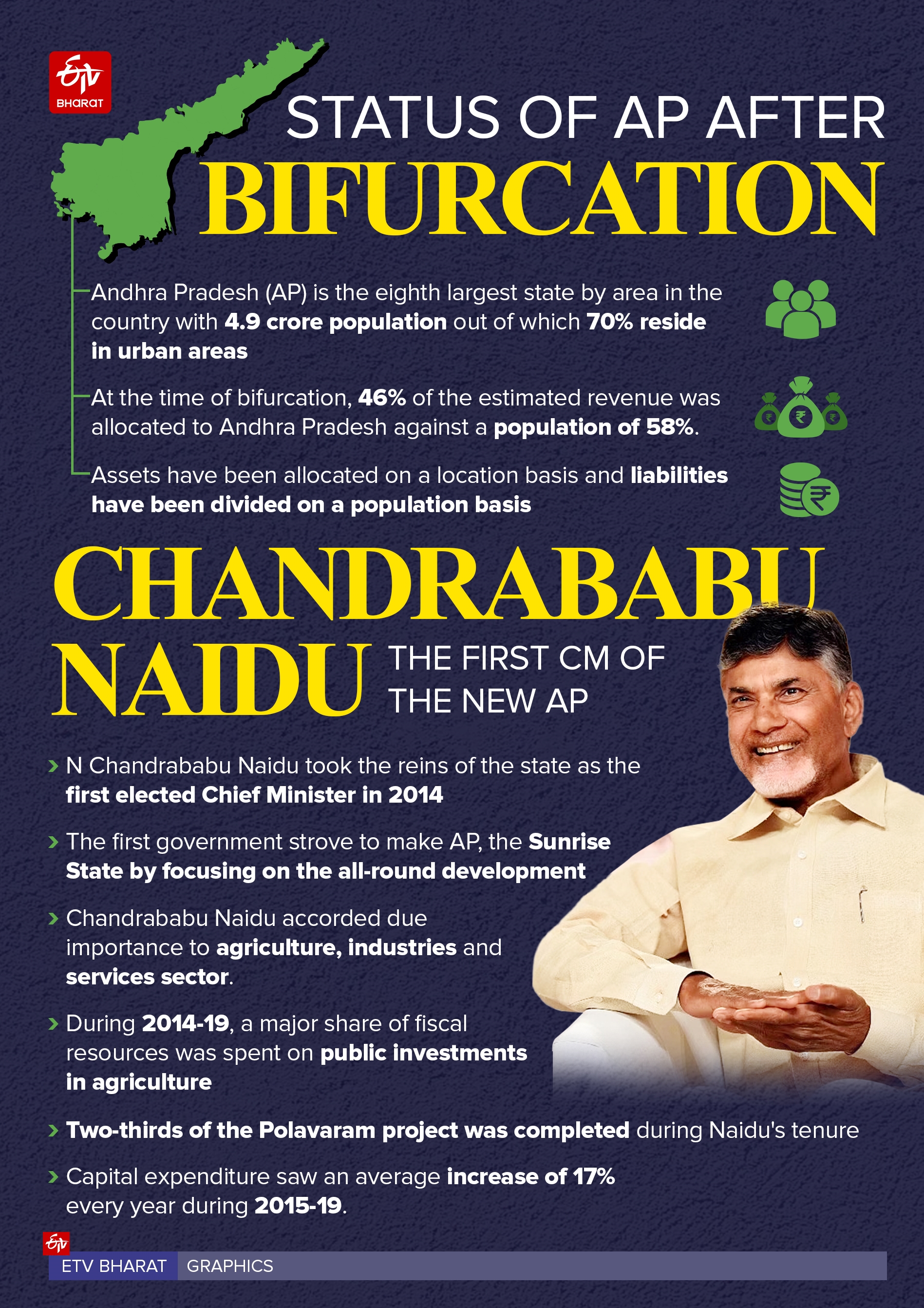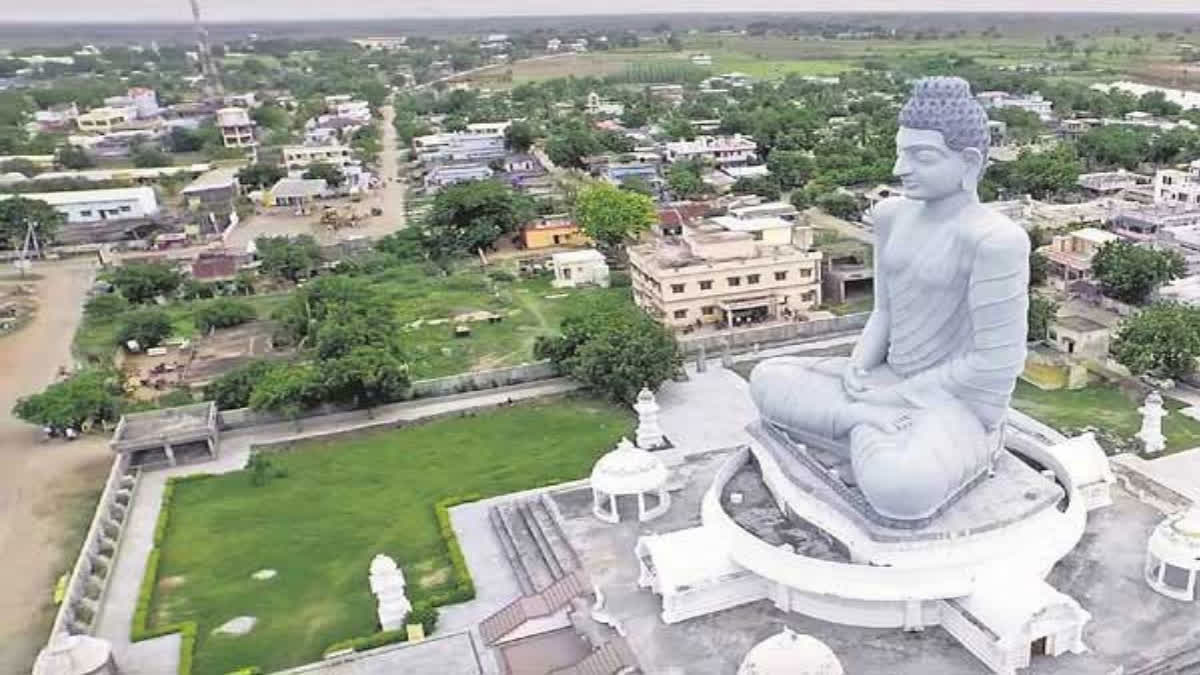Andhra Pradesh, which is considered the ‘Rice Bowl of India’, is the largest producer of rice in the country. Apart from that it has the second longest coastline in the country, followed by Gujarat. Furthermore, the state is endowed with rich natural resources and mineral wealth. Historically, this region has produced many prominent personalities and role models in multiple fields--politics, art, literature, films, education, agriculture, business, services, and whatnot--whatever they are, they brought laurels to their mother tongue, to the region and also to the motherland.
What happened to the Brand AP now? Why is the state in the news for all the wrong reasons in the last five years? Is it due to the politics of hatred and destruction? Or is it due to the growing criminalisation of public life in the state? Or due to the ugly face of crony capitalism?
Among the southern states, Telangana recorded the highest per capita income in 2022, followed by Karnataka, Tamil Nadu and Kerala. Andhra Pradesh has the lowest per capita. Also, Andhra Pradesh has the highest unemployment rate in the country among graduates at 24% and it is better than Andaman & Nicobar and Ladakh, as per the latest Periodic Labour Force Survey conducted during 2022-23.
What is the way out?
How would we want our future generations to remember us? Possible to regain self-respect and self-confidence? In whose hands it is now?
The Backdrop
Post bifurcation, the residuary State of Andhra Pradesh (AP) is the eighth largest state by area in the country, with 4.9 crore population out of which 70% reside in urban areas. At the time of bifurcation, 46% of the estimated revenue was given to Andhra Pradesh against a population of 58%. Assets have been allocated on a location basis and liabilities have been divided on a population basis. Therefore, the residuary state had to lose most of the assets that were left behind in Hyderabad. Also, AP lost the advantage of having an established capital and a large metropolis like Hyderabad, which was a driving force of economic growth through employment creation and revenue mobilisation. As admitted by the Government of India at the time of the state’s bifurcation, the fiscal, economic and social conditions of the residuary State of AP will be adversely affected due to bifurcation.
After bifurcation, the contribution of the agriculture sector was increased to 30.2% (it was 23% in the combined State during 2013-14). It had further gone up to 34.4% during 2017-18. This implies not only the inherent agrarian characteristic of the residuary AP, but also the loss of manufacturing and services sector areas. Geographically, the state is uniquely placed, which makes it prone to both drought and cyclones simultaneously. AP has the third largest drought-prone area, followed by Rajasthan and Karnataka. Out of 13 erstwhile districts, five districts viz. Anantapur, Chittoor, Kadapa, Kurnool and Prakasam are persistently drought-prone.

A Good Start
Against this backdrop, Chandrababu Naidu took the reins of the state as the first elected Chief Minister in 2014. The first government had started working towards making Andhra Pradesh, the Sunrise State by focusing on all-round integrated, holistic development of all sections of the people across the State.
While intended to do so through his visionary and committed leadership, the Chandrababu government had attempted to accord due importance to the agriculture, industries and services sectors. However, a perusal of the budgets during the 2014-19 period clarifies the AP’s priority for its agrarian economy. It is evident that a major share of fiscal resources was spent on public investments in agriculture. Polavaram was the government’s flagship irrigation project and two-thirds of it was completed on war footing, as per the GoI’s utilisation certificates during the period. Lift irrigation projects and interlinking of rivers and dams were undertaken across the state, be it the Veligonda and Gundlakamma projects in Prakasam, Nellore and Sangam barrages in Nellore, interlinking of Vamsadhara and Nagavali rivers in Srikakulam and the Handri Neeva Canal project across Rayalaseema.
As a top performer in the country, more than a lakh ponds were dug by converging MEPMA (Mission for Elimination of Poverty in Municipal Areas) and MGNREGA (Mahatma Gandhi National Rural Employment Guarantee Act) programmes in Anantapur to alleviate its water scarcity. Capital expenditure saw an average increase of 17% every year during 2015-19.
Furthermore, there was no substance in the argument that the Chandrababu government had focused only on a new capital, Amaravati to the detriment of other regional interests during its tenure. After the bifurcation of AP, a large chunk of Foreign Direct Investment (FDI) and domestic investments went to the districts of Chittoor (firms viz. Celkon, Karbonn and Foxconn), Anantapur (Kia Motors), Visakhapatnam (Adani and LuLu), Vizianagaram (Patanjali Food Park) and Krishna (HCL).
Such efforts started generating fruitful results, which is evident from the fact that Andhra Pradesh topped India in creating quality jobs, and in terms of gender equality, youth employment and labour force participation rate, as revealed by the JustJobs Index report in 2019. Solar Parks in Kurnool and Kadapa, the biggest in the world, launched in 2017-18. Each was aimed to produce 1000 megawatts of power. Located in the backward Rayalaseema region of the state, these enterprises provided large-scale employment at that time. Visakhapatnam, the 10th richest city in India (fourth in South India) in terms of GDP and per capita income, was already considered a powerful growth engine for northern Andhra Pradesh.
Companies Left Andhra, thousands of jobs lost
The change of leadership is quite common in any system of democracy. Andhra Pradesh is no exception. The YSRCP came to power in 2019 under the leadership of YS Jaganmohan Reddy. Since then vendetta politics coupled with crony capitalism became the order of the day in AP. Vendetta politics started with the demolition of a newly built government building Praja Vedika in June 2019 without any rationale. Instead of continuing the development works and welfare schemes of the earlier government, the Jagan government started reversing all the key decisions. In the name of reverse tendering, the government had started handing over the ongoing development projects, including the Polavarm Project to the cronies close to the Chief Minister.
The Polvaram Project is no longer a priority of the present AP government. The Opposition parties criticised the state government for inordinate delay in its completion and asserted that the Polavaram Project has become a rich source of money for some politicians. The small farmers, who had contributed over 32,000 acres of the land to the making of the new capital Amaravati, were insulted and harassed by Jagan’s government, which took a unilateral and unlawful decision to have three capitals in the State, including Amaravati as part of a political move.
This happened despite the YSRCP’s assurance of complete support to Amaravati during and before the 2019 elections. This would amount to abusing the people’s mandate. That is the beginning of the systematic ruining of the citizen-centric, business-friendly and human development-oriented ecosystem in AP, which had been initiated and created by the Chandrababu government. When other state governments rolled out the red carpet for investments and industries, AP acted absurdly and cruelly against the interests of the State.
To quote a few examples, a Singaporean consortium that would have developed a startup zone in the capital was evicted. Lulu Group from UAE was sent out from Visakhapatnam. Franklin Templeton was shunted out. Kia suffered humiliation. The Jockey was made to leave. Above all, the media reports about the displacement plans of Amara Raja, a leading battery manufacturing company in the country, from AP due to government harassment led to the loss of credibility of the AP government from the industry circles nationwide. Amara Raja decided to set up a state-of-the-art lithium-ion batteries research and manufacturing unit in Mahabubnagar district of Telangana with a massive investment over 10 years.
In the MSME sector, the Jagan government has conveniently evaded the concessions/incentives assured by it to the extent of at least Rs 2,500 crore. Most of the enterprises located in 543 industrial parks set up by the Andhra Pradesh Industrial Infrastructure Corporation (APIIC) are MSMEs. They are all suffering due to many infrastructural bottlenecks during the present regime, including basic facilities like maintenance of roads, supply of water and provision of street lights.
As part of the Make in India mission, the Union government nine years ago had sanctioned three industrial corridors viz. between Visakhapatnam – Chennai, Hyderabad – Bengaluru and Chennai – Bengaluru under the National Industrial Corridor Development (NIDC) programme. In the case of the first corridor, the AP government has to spend 21.5% on development expenses and in the case of the other two corridors, there is no financial obligation on the part of the state government, except utilising the funds provided by the Centre for the development of the corridors. However, the AP government failed miserably in doing so on this front, too. To elaborate further, the sheer negligence of the government is mirrored in the non-completion of the Visakha – Chennai Industrial Project (Phase I) for want of just Rs 36 crore. Up to 70% of this project had already been completed during the tenure of the earlier government.
As a consequence, a large number of educated youth are compelled to migrate to other states. Every year 2.5 lakh people graduate in AP, and the state is not absorbing even half of them in decent employment within the state. Some of the Vice-Chancellors of the universities earned the dubious name for openly favouring such political activities on the university campus that would please the political bosses of the party in power. A large number of teaching positions remain unfilled. This affected the teaching-learning process, ambience for good research and work culture in most of the universities. As a result, a large number of native students prefer to leave AP for higher education and a better career
Hence, there is an urgent need to revamp the state universities by reviving their functioning and lost credibility. Regarding the informal sector, a large number of skilled and semi-skilled workers had left for the neighbouring states for their livelihood leaving their families and parents behind. Even the Andhra Pradesh Public Service Commission (APPSC) had lost its credibility due to its malfunctioning and misgovernance, which is reflected in the strictures of the AP High Court- Professor NVR Jyoti Kumar, Department of Commerce, Mizoram Central University



